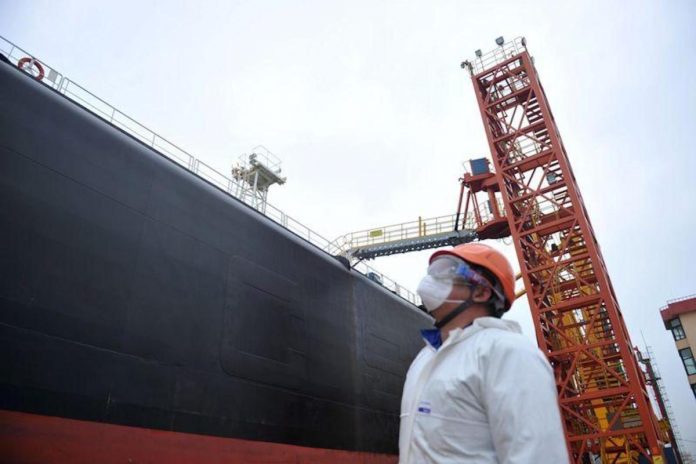China has become central to economies in the Middle East with widening economic and political ties. The most obvious facet of the closer relationship was expected in trade, which has grown increasingly unbalanced.
For oil-exporting economies, imports grew faster than exports particularly after the collapse in oil prices in late 2014, but the situation has improved somewhat recently. For oil exporters in the Middle East, bilateral trade deficits with China are growing fast.
Beyond the larger – but less balanced – trade links, China had also become a very large global investor since 2010 and accelerated trade until 2017. Part of this investment drive has had as its key driving force the Belt and Road Initiative.
However, regarding acquisition of companies overseas rather than lending, the main target was the developed world, starting with the US until former president Donald Trump’s administration imposed stricter regulatory barriers to limit China’s mergers and acquisitions (M&A) in the US.
Since then, Europe has become the main target for China’s M&A while the emerging world remained much less of a target, especially when excluding Asia. Since 2018 China has clearly retrenched as a global acquirer of companies and when it does invest, it tends to focus on smaller targets, generally below the radar, especially in the West.
One could imagine that the increasingly strict screening of Chinese acquisitions in the US and, more recently, in Europe may have pushed China to find targets in the developing world, including in the Middle East, but this is not what we find in the data.
In fact, as both the Chinese and Middle Eastern economies continued slowing down, the investment enthusiasm waned after 2017 and then decelerated rapidly. This is also the case for Chinese investment in the Middle East, which echoed the generally decelerating trend of China’s overseas investment in recent years.
In particular, China’s investment in the Middle East declined sharply from more than US$5.2 billion in 2016 to $2.1 billion in 2018, and then to only $300 million in 2019 and $100 million in 2020.
There are many reasons for this trend. First and foremost, the Chinese economy has been decelerating quite rapidly since 2018 and, even more so, since the outbreak of Covid-19. As a result, the room for additional investment abroad has shrunk. Second, the pandemic itself has virtually stopped travel into and out of China, making Chinese investment overseas much more difficult.
It should be noted, though, that these data only show China’s direct investment into the Middle East and exclude that of Hong Kong and other financial centers, which happens to be very large but for which no breakdown is available.
Beyond M&A, China’s greenfield investment overseas fared better, but that was mainly because it came from a much smaller base. The total value of China’s greenfield investment into the Middle East was less than $1 billion in 2016, climbing to between $2 billion and $3 billion in the next two years until it dropped again to less than $200 million in 2020.
Development finance is another aspect to consider when looking at China’s investment in the Middle East. The Middle East is an important part of the Belt and Road Initiative, with nearly all the 18 countries in that region participating in the BRI. At the peak, China’s development finance increased to $16.8 billion in 2016, but it has decreased ever since and had hardly existed since the Covid pandemic started.
Looking at these trends, it is important to note that China’s overall retrenchment from its massive global investment is more acute in the Middle East than in other regions. The share of the Middle East in China’s total overseas investment has declined across the board.
More specifically, this is true for all three key types of investment, namely M&A, greenfield, and development finance.
By country breakdown, Iran was the biggest recipient of China’s development finance, but nearly all of these large projects happened during 2016 and 2017. Israel tops China’s M&A activities, and the situation remained so even in 2020, with two deals taking place in the industrial and ICT (information and communication technology) sectors. The United Arab Emirates has been the largest target for China’s greenfield investment.
As regards the sectoral breakdown of China’s investment, transportation, ICT and energy are clearly the preferred sectors. Still, over the past few years, China’s interest in infrastructure investment has been fading, and so has its interest in the transportation sector in the Middle East.
Instead, China has expressed interest in the ICT sector, but increased scrutiny on data collection and management in both China and the Middle East has made this difficult.
All in all, it seems unlikely that China’s investment in the region will increase drastically in the next few years as Beijing needs to deploy its savings domestically in light of a rapidly decelerating economy.
By Alicia Garcia Herrero / asiatimes
The views and opinions expressed in this article are solely those of the author and do not necessarily reflect the position of AsiaWE Review.




